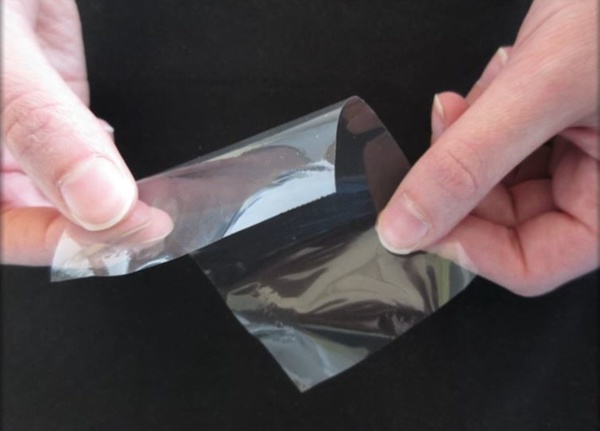|
engineers at the california institute of technology (caltech) and eth zurich have discovered the means to create artificial skin that detects temperature changes by emitting an electrical response, which could be grafted onto prosthetic limbs to restore temperature sensing in amputees or be used by medical professionals to alert them to temperature increases in wounds.

researchers have developed an artificial skin that responds to temperature changes. (youtube)
according to a report on the caltech website, this artificial skin reacts in similar ways to the organ in a pit viper that allows it to sense its prey in the dark through radiated heat.
the breakthrough came from an unlikely source. the researchers were creating synthetic wood in petri dishes and developed a material that demonstrated electrical response to temperature changes in the lab. the source of this response was pectin, a long-chain molecule present in plant cell walls, and the engineers created a thin and transparent film of pectin and water.
as the article explained, “pectin molecules in the film have a weakly bonded double-strand structure that contains calcium ions. as temperature increases, these bonds break down and the double strands ‘unzip,’ releasing the positively charged calcium ions.”
the scientists believe that the increased concentration of free calcium ions and the increased mobility of those ions decrease the electrical resistance of the material. the skin can detect tiny changes in temperature over a range of 5-50°c and scientists are hoping to increase that range as high as 90°c to make it usable for industrial applications.
an ieee spectrum article added, “the artificial skin could detect gentle finger pokes, precisely mapping temperature variations across its surface. it could even sense warm bodies—a teddy bear microwaved to a temperature of 37 °c—up to one meter away.”
the pectin films, according to the article, also withstood physical contact, bending and twisting, which makes it practical for artificial skins, and stayed stable despite being warmed and cooled 215 times.
the research was recently published in science robotics. the abstract of the report stated:
“artificial membranes that are sensitive to temperature are needed in robotics to augment interactions with humans and the environment and in bioengineering to improve prosthetic limbs. existing flexible sensors achieved sensitivities of <100 millikelvin and large responsivity, albeit within narrow (<5 kelvin) temperature ranges.
“other flexible devices, working in wider temperature ranges, exhibit orders of magnitude poorer responses. however, much more versatile and temperature-sensitive membranes are present in animals such as pit vipers, whose pit membranes have the highest sensitivity and responsivity in nature and are used to locate warm-blooded prey at distance.
“we show that pectin films mimic the sensing mechanism of pit membranes and parallel their record performances. these films map temperature on surfaces with a sensitivity of at least 10 millikelvin in a wide temperature range (45 kelvin), have very high responsivity, and detect warm bodies at distance.
“the produced material can be integrated as a layer in artificial skin platforms and boost their temperature sensitivity to reach the best biological performance.”
learn more about this new material in the video below:
|